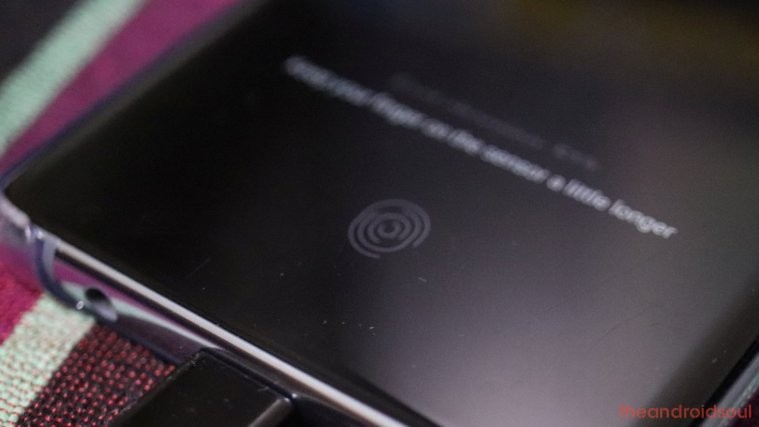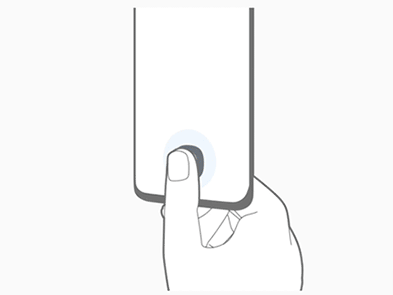It first sounded crazy that a fingerprint scanner could be hidden under the display screen, but the truth now is in-display or under-display fingerprint sensors have had an impact on the smartphone industry since arriving, even if not by much. Today, more than 60 devices have a fingerprint scanner hidden under the display panel and more will be getting this feature in the future.
Smartphones like OnePlus 7 Pro, Huawei P30 Pro, and Samsung Galaxy S10 have received rave reviews partly thanks to the in-display fingerprint sensor that manages to register a thumbprint and unlock your phone in a fraction of a second, just like the typical fingerprint scanner we are used to.
But wait, how did we even arrive here?
To give you a perspective of how we got here, meet “The rise of in-display fingerprint sensor” on Android phones, a closer look at the events since the first in-display fingerprint sensor sprung to life all thanks to Vivo, a Chinese company you might know very little about.
When was the tech announced?
It was at the CES 2018 that the first prototype of a working in-display fingerprint scanner popped up. This was demoed by Vivo, a Chinese company that finished 2018 in the top 6 of the list of leading global smartphone vendors with a market share of 7%.
The Synaptics-made prototype first leaked in mid-2017 and was confirmed to only work on AMOLED panels, which is still the case today. As expected, though, Synaptics is no longer the only vendor in this business, with others like Qualcomm having already joined the fun.
What was the first smartphone with an in-display fingerprint sensor?
As noted, Vivo was the first to reveal a smartphone prototype with a working in-display fingerprint sensor, which translated to the company becoming the first with a mainstream smartphone rocking this feature – the Vivo X20 Plus UD.
This handset was announced in January 2018 and a month or so later, the same company took the wraps off yet another device with an in-display fingerprint sensor – the Vivo X21 UD. In June of the same year, the Vivo NEX S joined the party and today, more than 10 Vivo smartphones have an in-display fingerprint scanner, the most from any single company.
When did in-display fingerprint sensors become mainstream?
Despite Vivo leading the rest with its exploits in Q1 2018, the fact that most of the devices initially released with in-display fingerprint scanners were limited to the Chinese market meant that this tech struggled to take off in the mainstream market, at least until the big boys started joining the party.
Huawei became the first major Android vendor to adopt this tech via the Huawei Mate RS Porsche Design released in April 2018, shrugging off competition from Samsung, which joined the party as recent as February 2019, to the finish line.
Huawei did know it was dealing with first generation tech at the time and chose to include a rear-mounted fingerprint scanner on the Mate RS as well. But now that the tech has evolved into something reliable, the company has since dropped this approach and instead only offers an in-display fingerprint sensor on its flagships, beginning with the Mate 20 Pro that came out in late 2018.
Xiaomi, the fifth biggest smartphone vendor in the world, brought its first device aboard this ship in July 2018, the China-limited Xiaomi Mi 8 Explorer Edition, and today, the company has at least eight devices with a fingerprint scanner hidden under the display screen.
Will budget phones get in-display fingerprint scanning tech?
As always, new and shiny tech in the smartphone industry usually arrives on high-end phones before eventually trickling down to the midrange and low-end phones. We saw it with the original fingerprint scanner and things like having multiple camera lenses, so we are optimistic in-display fingerprint scanning tech will eventually arrive on budget phones.
As noted, its only in February 2019 that Samsung joined the party courtesy of the premium Galaxy S10 and S10+, but the company has since doubled its portfolio with the addition of Samsung Galaxy A50, Galaxy A70, and Galaxy A80, all of which are midrange devices. With more devices expected in the future, we won’t be surprised if this tech starts showing up on sub-$300 smartphones.
Wait, its already happening with Xiaomi’s Redmi K20 and Redmi K20 Pro handsets, both of which have an in-display fingerprint scanner yet they are a target for budget spenders. Motorola Moto Z4 and Xiaomi Mi 9 SE are the other reasonably priced smartphones that come with an in-display fingerprint scanner.
How good is an in-display fingerprint sensor?
At this point in time, in-display fingerprint sensors are still not good enough. But we all know it’s never easy to get it right with new tech, which is the case for in-display fingerprint scanning tech on smartphones. In fact, many will agree that Apple hasn’t adopted this tech on any of its flagship iPhones because it hasn’t matured enough.
Samsung took its sweet time working on the tech now used in the Galaxy S10 and S10+, but it’s still not perfect, with some users still unhappy with the performance while others are concerned with security and privacy. This, basically, tells us that perfecting the tech will take time, probably another year or so.
On the brighter side, there are some real differences between the first and second-generation in-display fingerprint sensors, with devices like OnePlus 7 Pro and Huawei P30 Pro receiving rave reviews about the quality of in-display fingerprint sensors they have, something that gives us hope for a better future.
Should you buy a phone with an in-display fingerprint sensor?
By the time 2020 ends, we’ll probably be swimming in a pool of smartphones with in-display fingerprint sensors as the popular authentication method. This will be the perfect time to buy a smartphone with an in-display fingerprint scanner, but until then, it shouldn’t be your primary reason for choosing a certain phone over the other.
Of course, this doesn’t mean you shouldn’t buy one. If you enjoy having the latest tech around you, this might be it. At the moment, though, you might be limited by choice, with only a handful of phones with this feature available in the U.S. The fact that the tech isn’t perfect and still buggy should also worry you.
Right now, you can only pick from three Galaxy S10 variants (excluding the Galaxy S10e that has a side-mounted scanner), OnePlus 7 Pro, OnePlus 6T, and the Motorola Moto Z4.








